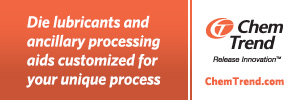This section presents a systematic plan for assessing the working environment of a proposed or existing product to determine if advanced die casting processes will produce cost-performance benefits.
The analysis may be divided into seven categories:
- Operating temperatures
- Applied loads
- Assemblies
- Electrical/electronic requirements
- Thermal conductivity
- Corrosion
- Unexpected and unquantifiable conditions
Operating Temperatures
The temperature at which the component is expected to operate is often a limiting factor in material/process selection. Three criteria should be considered:
- Cyclic versus steady state
- Continuous or transient
- Internal and external
Applied Loads
Applied loads must be assessed in terms of the stress levels or the deflections they produce.
Four types of load should be assessed:
- Long term or continuous, which may induce creep or stress corrosion cracking.
- Short term, applied relatively few times. Data on mechanical properties can usually be directly applied.
- Cyclic, repeated thousands or millions of times, inducing fatigue failure.
- Impact, applied once or very few times, causing gross distortion or fracture.
Information presented later on strength, rigidity and endurance in the Structural Criteria section gives guidelines for applying the mechanical properties of die casting alloys to all four load types. The mechanical properties of die casting alloys vary widely. In general, they are superior to plastics. The higher-strength alloys are equivalent to mild iron, steel, and brass alloys, and all are lower than specially alloyed or heat treated iron and steel alloys.
Assemblies
Assemblies present major opportunities for a die cast product advantage. In many product applications the individual parts of a multiple part assembly can be combined into one die cast part.
Three characteristics must be considered when using die castings with mating parts in an assembly:
- Dissimilar materials may require special design measures.
- The optimum method of attachment may depend on the materials.
- Mounting surfaces may require more or less dimensional precision.
Electrical/Electronic Requirements
The proliferation of electronic devices, particularly those that generate high frequencies, has caused problems from EMI.
A very effective and practical way to achieve EMI shielding is enclosing the device within a conductive cover.
Thermal Conductivity
The thermal conductivity of die castings may be used to advantage when thermal energy needs to be transferred or dissipated. Often, die castings are used as heat sinks.
Corrosion
Die casting alloys are subject to two types of corrosion: atmospheric and galvanic.
Galvanic corrosion is an electrochemical reaction occurring at the interface of dissimilar metals in the presence of an electrolyte (liquid capable of conducting electricity). Typical measures are to:
- Use galvanically compatible alloys
- Eliminate features that hold in moisture
- Provide a moisture proof barrier
Detailed information on galvanic corrosion is given in the section on assemblies (see above).
Unexpected & Unquantifiable Conditions
- Product engineer tries to foresee unusual conditions.
- A margin of safety should be established
- Some conditions cannot be quantified.








